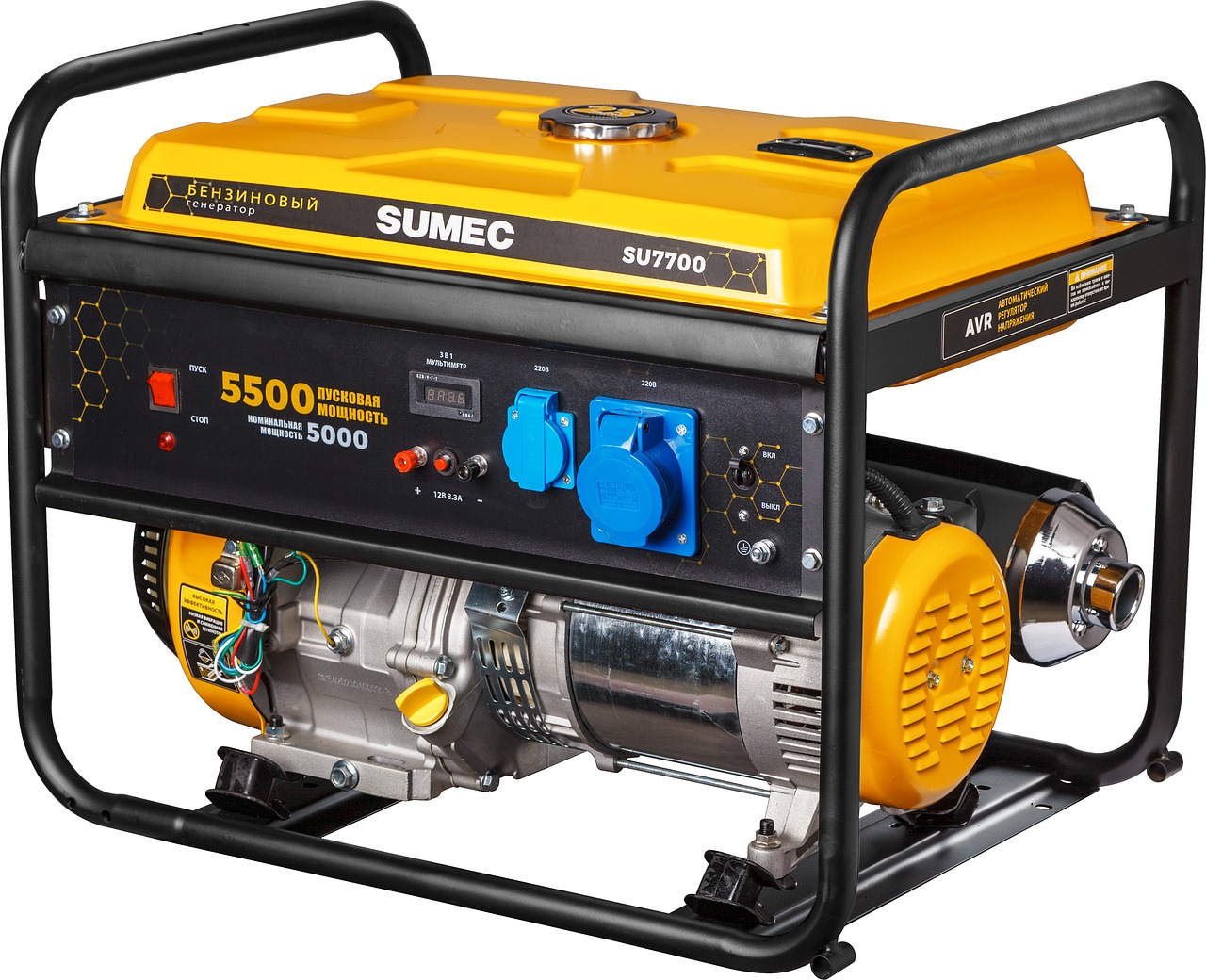Introduction to Micro Hydro Power Generation
Micro hydro power generation is an innovative and sustainable method of producing electricity by harnessing the energy of flowing water. Unlike large-scale hydroelectric plants, micro hydro systems are designed for small-scale applications, making them an ideal solution for homes, farms, and remote communities. These systems operate on the same fundamental principles as their larger counterparts but are scaled down to suit individual or community needs.
The basic principle behind micro hydro power generation involves converting the kinetic energy of flowing water into electrical energy. This process typically begins with the diversion of water from a stream or river into a channel or penstock. The water then flows through a turbine, causing it to spin. The movement of the turbine drives a generator, which produces electricity. The electricity generated can be used immediately, stored in batteries, or fed into the local electrical grid.
One of the primary advantages of micro hydro power generation is its status as a renewable energy source. Unlike fossil fuels, which are finite and contribute to environmental degradation, water is a naturally replenishing resource. Moreover, micro hydro systems have a relatively low environmental impact compared to other forms of energy production. They do not produce greenhouse gases and have minimal effects on local ecosystems, provided they are appropriately designed and implemented.
Micro hydro power generation is particularly advantageous in regions with abundant water resources and limited access to conventional electricity grids. In remote areas, where extending the electrical grid is often impractical and costly, micro hydro systems can provide a reliable and cost-effective source of power. Additionally, for small-scale applications like individual homes or farms, these systems offer an efficient means of achieving energy independence.
As the world increasingly turns towards renewable energy solutions, micro hydro power generation stands out as a viable and sustainable option. By effectively utilizing local water resources, these systems contribute to reducing carbon footprints and promoting energy self-sufficiency. In the following sections, we will delve deeper into the various aspects of micro hydro power generation, guiding you through the process of selecting, installing, and maintaining a system that suits your specific needs.
How Micro Hydro Power Systems Work
Micro hydro power systems harness the kinetic energy of flowing water to generate electricity, providing a renewable energy solution for remote and rural areas. The process begins with the water intake, where water is diverted from a river or stream into a channel or pipeline known as the penstock. The penstock channels the water downhill, using gravity to increase the water’s velocity and pressure.
The water then flows into the turbine, a crucial component where the conversion of energy occurs. The turbine consists of blades or a rotor that is turned by the force of the water. As the water hits the turbine blades, it spins the rotor, converting the kinetic energy of the water into mechanical energy. The type of turbine used can vary depending on the water flow and head (the height difference from the water source to the turbine), with common types including Pelton, Francis, and Kaplan turbines.
Once the turbine is in motion, it is connected to a generator, which converts the mechanical energy into electrical energy. The generator operates on the principle of electromagnetic induction, where the rotating turbine shaft turns a rotor inside the generator, inducing an electrical current in the stator windings. This electrical energy can then be utilized directly or stored in batteries for later use.
The efficiency of a micro hydro power system depends on several factors, including the flow rate and head of the water source, the design of the system components, and the overall installation. Properly designed systems can achieve conversion efficiencies of up to 90%, making them an effective and sustainable energy solution.
Diagrams and illustrations can significantly aid in understanding this process, showing the flow of water from intake to the turbine and generator. By visualizing the mechanics, potential users can better appreciate the simplicity and elegance of micro hydro power systems, reinforcing their viability as a clean energy source.
Key Components of a Micro Hydro System
A micro hydro power generation system is comprised of several essential components, each playing a critical role in the efficient conversion of flowing water into usable electricity. Understanding these components and their functions is vital for anyone considering investing in or maintaining a micro hydro system.
The first crucial component is the intake structure. This element is responsible for diverting water from its natural source, such as a river or stream, into the system. The intake structure typically includes a screen to filter out debris and ensure that only clean water enters the system, protecting the downstream components from damage.
Next, the penstock comes into play. This is a large pipe that transports the water from the intake structure to the turbine. The penstock must be robust and appropriately sized to handle the high pressure and volume of water. The design and material of the penstock are critical as they influence the efficiency and reliability of the entire system.
The turbine is the heart of the micro hydro system. As water flows through the turbine, it spins the blades, converting the kinetic energy of flowing water into mechanical energy. There are various types of turbines, such as Pelton, Francis, and Kaplan, each suited to different water flow conditions and head heights.
Connected to the turbine is the generator. The generator converts the mechanical energy from the turbine into electrical energy. This conversion is achieved through electromagnetic induction, where the rotating turbine shaft turns a rotor inside the generator, creating an electrical current.
The control system is essential for maintaining optimal operation and safety. It regulates the flow of water to the turbine, ensuring that the system operates within safe parameters. It also monitors the electrical output and adjusts the system to match the demand, preventing overloads and ensuring consistent power supply.
Finally, the electrical transmission system is responsible for delivering the generated electricity from the micro hydro system to where it is needed. This system includes transformers, wiring, and other infrastructure components necessary to distribute the electricity efficiently and safely to homes, businesses, or the grid.
Each of these components works in harmony to create a reliable and effective micro hydro power generation system. Proper understanding and maintenance of these components are crucial for ensuring long-term efficiency and sustainability.
Assessing Your Site for Micro Hydro Potential
Before investing in a micro hydro power generation system, a thorough assessment of your site is essential. Evaluating your site’s potential involves several critical factors, including water flow rate, head height, seasonal variations, and environmental impact. This section will guide you through the process of assessing these factors, offering practical tips and resources to ensure an accurate evaluation.
The water flow rate is a primary determinant of the power generation capacity of a micro hydro system. To measure the flow rate, you can use a flow meter or calculate it manually by timing how long it takes for a known volume of water to pass a certain point. Consistent measurements over a period can help account for any day-to-day fluctuations. Flow rate data from local water authorities or hydrological studies can also be valuable.
Head height, or the vertical distance the water falls, is another crucial factor. The greater the head height, the more potential energy can be converted into electricity. To measure head height, you can use a surveyor’s level or a more straightforward method such as a water level tube. GPS technology can also assist in determining accurate elevations. Combining head height with flow rate provides a clear picture of your site’s energy potential.
Seasonal variations in water availability should also be considered. Rivers and streams may have significantly different flow rates during dry and wet seasons. Historical data or local climate records can offer insights into these variations, helping you to design a system that operates efficiently year-round.
Environmental impact is a key consideration in assessing your site. A micro hydro project should have minimal disruption to local ecosystems. Conducting an environmental impact assessment (EIA) can identify potential issues such as fish migration disruptions or water quality changes. Consulting with environmental experts and utilizing EIA tools can mitigate these impacts.
Various tools and resources can aid in this comprehensive assessment. Hydrological maps, flow meters, and GPS devices are invaluable for measuring flow rate and head height. Additionally, software programs designed for hydro power assessment can provide detailed simulations and feasibility analyses. By methodically measuring and analyzing these factors, you can ensure that your site is well-suited for a micro hydro power generation system.
Sizing Your Micro Hydro Power System
Determining the appropriate size of a micro hydro power system is crucial for ensuring optimal performance and cost-effectiveness. The sizing process primarily revolves around understanding your energy needs and site-specific conditions. To begin, you must evaluate your household or facility’s total energy consumption. This can be achieved by examining your monthly electricity bills or using an energy consumption calculator to estimate daily, weekly, and monthly usage in kilowatt-hours (kWh).
Once your energy needs are established, the next step is to assess the potential power output of your chosen site. This involves two key factors: the flow rate of the water and the height difference, or head, through which the water falls. The flow rate is typically measured in liters per second (L/s) or cubic meters per second (m³/s), while the head is measured in meters (m). The power output (P) in kilowatts (kW) can be calculated using the formula:
P = (Flow rate x Head x Gravity x Efficiency) / 1000
Where gravity is a constant (9.81 m/s²) and efficiency accounts for losses in the system, which typically ranges between 50-70% for micro hydro systems.
For instance, if your site has a flow rate of 0.1 m³/s and a head of 10 meters, with an efficiency of 60%, the power output will be:
P = (0.1 x 10 x 9.81 x 0.60) / 1000 = 0.5886 kW
Calculating the power output helps in understanding whether the site can meet your energy demands. If your daily electricity consumption is 10 kWh, a system producing 0.5886 kW continuously over 24 hours would provide approximately 14.1 kWh per day, which is more than sufficient.
Efficiency considerations are also pivotal. Ensuring that the components of your micro hydro system, such as the turbine, generator, and control mechanisms, operate efficiently will enhance the overall performance and longevity of the system. Regular maintenance and proper installation are vital to achieving high efficiency.
Matching the system size to your energy demand is essential. An undersized system may lead to insufficient power supply, while an oversized system could result in unnecessary costs and inefficiencies. Thorough site assessment, accurate calculations, and consideration of efficiency ensure that your micro hydro power system will be both effective and economical.
Installation and Maintenance Considerations
Installing a micro hydro power generation system involves several crucial steps, each requiring careful planning and execution to ensure optimal performance and longevity of the system. The first step is site preparation, which includes assessing the water source to determine its flow rate and head—two critical factors that influence the system’s potential energy output. Site preparation also involves clearing any obstacles and ensuring that the location is environmentally sustainable and complies with local regulations.
Once the site is prepared, the next phase is the installation of components. This typically starts with setting up the intake structure to divert water efficiently. The penstock, a crucial pipeline that channels water to the turbine, must be installed with precision to minimize energy loss through friction. Turbine installation follows, where it’s vital to align it correctly with the penstock and ensure it is securely mounted. Generators and electrical components, including controllers and inverters, are then installed and connected to the turbine. Proper electrical wiring and grounding are essential for safety and efficiency.
System commissioning is the final step in the installation process. This involves testing the entire setup to ensure each component functions correctly and harmoniously. Flow rates, electrical outputs, and mechanical operations are carefully monitored and adjusted to achieve optimal performance. A thorough commissioning checklist helps identify potential issues before the system is fully operational.
Ongoing maintenance is key to the long-term reliability and efficiency of a micro hydro power generation system. Regular inspections should be conducted to check for debris in the intake structure, wear and tear on the turbine, and the condition of electrical components. Common issues such as clogging, sediment buildup, and mechanical failures should be addressed promptly. Troubleshooting these problems often involves cleaning the intake, replacing worn-out parts, and recalibrating electrical settings.
In summary, a well-planned installation combined with diligent maintenance practices ensures that a micro hydro power generation system remains an efficient and reliable source of renewable energy for years to come.
Cost and Financial Considerations
When evaluating the feasibility of micro hydro power generation systems, understanding the financial implications is crucial. The initial investment for a micro hydro system typically includes the costs of site assessment, system design, equipment purchase, and installation. These expenses can vary significantly based on the site’s characteristics and the scale of the project. Generally, smaller systems designed for individual homes or small communities might cost between $1,000 and $20,000, whereas larger, more complex installations could exceed $100,000.
Installation costs encompass labor, civil works (such as constructing intake structures and pipelines), and electrical components necessary for connecting the system to the grid or local electrical network. These costs are highly site-specific and can be influenced by factors such as accessibility, terrain, and local labor rates. Additionally, any necessary permits and regulatory compliance measures must be factored into the budget.
Ongoing maintenance is another critical financial consideration. Micro hydro systems generally have low operating costs, primarily due to their robust design and the fact that water flow is a relatively consistent energy source. Regular maintenance activities might include cleaning intake screens, periodic inspection of mechanical and electrical components, and occasional repairs. These costs are typically modest, especially when compared to other renewable energy systems like wind or solar.
From a financial benefits perspective, micro hydro power systems offer significant long-term savings on energy costs. By generating electricity on-site, users can reduce or even eliminate their reliance on grid power, leading to lower utility bills. Additionally, many regions offer financial incentives such as grants, tax credits, and subsidies to encourage the adoption of renewable energy technologies. These incentives can substantially offset the initial investment and improve the overall return on investment (ROI).
A comprehensive cost-benefit analysis reveals that, despite the upfront costs, micro hydro power systems can be economically viable, especially in areas with suitable water resources. When considering the long-term energy savings, potential revenue from excess power generation, and available financial incentives, micro hydro systems present a compelling case for sustainable and cost-effective energy generation.
Recommendations and Best Practices
When considering micro hydro power generation systems, it is essential to follow practical recommendations to ensure a successful implementation. First and foremost, selecting reliable equipment is critical. Opt for well-established brands known for their durability and efficiency. Ensuring that the turbine, generator, and control systems are of high quality will minimize maintenance issues and extend the lifespan of the system.
Working with experienced installers is equally important. Professionals with a proven track record in micro hydro power installations can provide valuable insights and avoid common pitfalls. They can assess your site accurately and recommend the most suitable system for your specific needs, thereby maximizing the energy output and ensuring safety.
Compliance with local regulations cannot be overlooked. Each region may have different requirements and permits needed for micro hydro power installations. Engaging with local authorities early in the planning process will help avoid legal complications and ensure that your system meets all necessary environmental and safety standards.
Case studies and success stories highlight both the benefits and challenges of micro hydro power systems. For instance, a small community in rural Nepal successfully implemented a micro hydro system that now provides consistent electricity, significantly improving the quality of life and economic opportunities for residents. Conversely, a project in a mountainous area faced challenges due to seasonal water flow variations, underscoring the importance of thorough site assessment and planning.
Incorporating these best practices—choosing reliable equipment, engaging experienced installers, and ensuring regulatory compliance—can significantly enhance the efficiency and sustainability of your micro hydro power system. Learning from both successful implementations and challenges faced by others can provide valuable insights and help avoid common mistakes.



